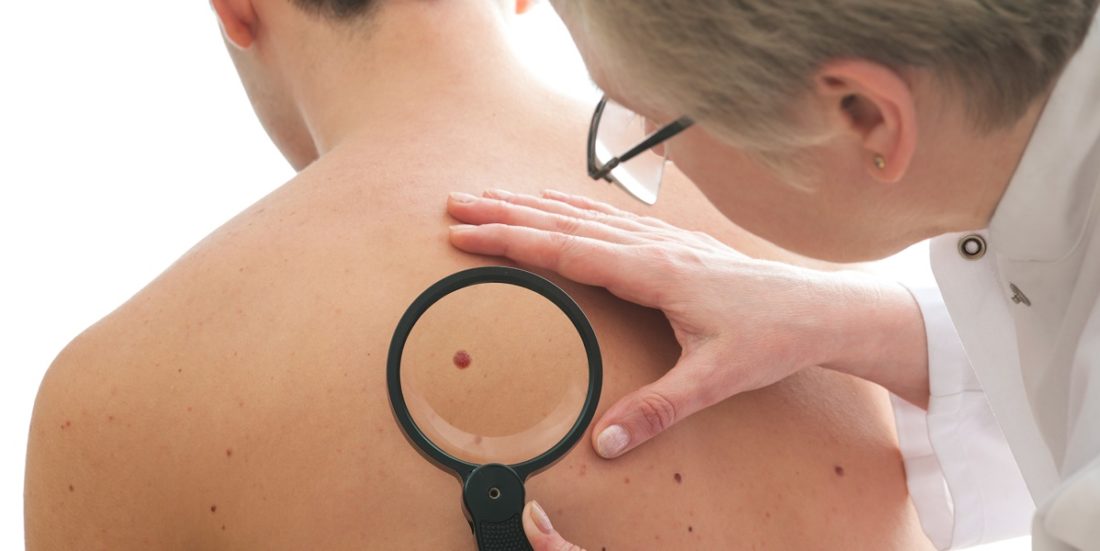New method for detecting melanoma
Cancer in moles is not always easy to see with the naked eye. By analysing images, a new computer program can detect cancerous moles automatically.
MELANOMA: We get hot in the sun and shed our clothes. No one wants to wreck a summer’s idyll by reminding people about the risk of skin cancer from sunbathing, but the risk is there nonetheless. Sunshine and melanoma are related.
Melanoma at a glance
- Melanoma was the fifth most common cancer in 2014, with 2003 cases in Norway.
- Melanoma has risen sharply over several years and was the type of cancer that increased the most during 2014. Tanning habits are the main reason melanoma has increased so much.
- Compared to other cancers, this is the second most common cancer in the 25-49 year old age group among both men and women.
- Most people who get melanoma are between 50 and 70 years old. The five-year survival rate is 79% ofor men and 87.5% for women.
- How to protect yourself: https://www.cancer.net/cancer-types/melanoma/risk-factors-and-prevention
- Source: Cancer Registry of Norway / Norwegian Cancer Society
The incidence of cancer in young adults, especially in women, appears to be on the rise. Melanoma is one of the most dangerous forms of skin cancer, but if it is detected and treated early, the chance of recovery is good. Researchers at NTNU have developed a diagnostic program to help doctors decide if a mole is cancerous or if it’s harmless.
“We aren’t trying to take over making the diagnosis — that’s still the doctor’s job. But this method can be a valuable tool to make better diagnoses,” says Jon Yngve Hardeberg, a professor at the Norwegian Colour and Visual Computing Laboratory.
- You might also like: Bubbles and ultrasound destroy tumours in lab animals
Simulates sight
Melanoma can be difficult to detect, because in the earliest stages of development cancerous moles are very similar to benign moles. Having good procedures to detect melanoma at an early stage and being able to differentiate it from benign changes to the skin is critical. Since the doctor initially does this through a visual examination, a lot depends on a doctor’s experience in assessing moles.
“Our aim was to develop a fast and effective solution to classifying melanoma. This method simulates the sense of sight and looks for certain patterns in the mole. The method is very similar to human visual perception,” says postdoctoral fellow Tomas Majtner at NTNU’s Colourlab.
More specifically, a set of algorithms does the job in five stages. A mole is photographed and the image is then processed by a computer program, which detects and singles out the interesting area of skin. Then the program analyses the texture of the mole on the basis of numerous properties, in order to automatically classify it as cancerous or harmless. The special feature of this method is that it penetrates into and uses the texture of the mole as the subject of analysis, rather than looking at its colour.
The method was developed based on a set of test images from the University of Tromsø. With a classification tool like this, doctors can avoid removing benign moles unnecessarily.
- You might also like: A most unusual cancer patient
High accuracy
Besides saving valuable time, this method can be an important aid in cases where the doctor is in doubt, and especially in training doctors to detect melanoma or for general practitioners who don’t work with melanoma everyday. The challenge ahead will be to develop user-friendly and reasonably priced systems that can be used by more doctors.
“Collaborating with other disciplines is important in this field. We have expertise in colour imaging and image quality, which can provide exciting and useful results when combined with others’ expertise in biomedical optics and dermatology. We’ll continue to cooperate with medical research groups,” says Hardenberg.
Future app?
Majtner says that the method has an accuracy of 97 per cent in tests so far. Researchers plan to test the method on another dataset of images that are more difficult to interpret, and see if they can develop the method for additional types of skin cancer.
“We’re not quite there yet, but one possible future application of the method would be an app that allows you to check your own moles,” says Majtner.
The research is part of the research project IQ-MED.
Reference: This article has been accepted for presentation at the International Conference on Image Analysis and Recognition conference which will take place from 13 to 15 July in Portugal, see https://www.aimiconf.org/iciar16/. The article will appear in print in Springer’s Lecture Notes in Computer Science series after the conference.


